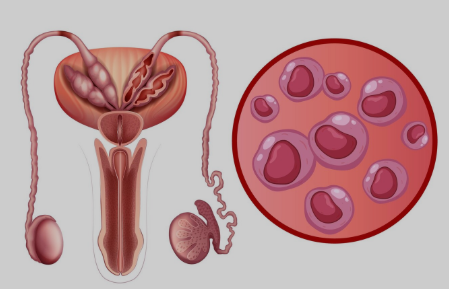Overview
Urinoma is a rare but potentially serious condition in which urine leaks from the urinary tract into surrounding tissues, usually due to trauma, obstruction, or surgical complications. The leaked urine collects in a localized area, forming a fluid-filled sac. While small urinomas may resolve on their own, larger or infected ones can lead to complications and require intervention.
What is Urinoma
Urinoma is a collection of urine that has escaped from the urinary tract into adjacent tissues, typically forming a well-defined encapsulated fluid mass. It most commonly occurs in the retroperitoneal space, particularly after trauma to the kidneys, ureters, or bladder. Urinomas can also result from iatrogenic causes, such as surgery or urinary obstruction. If not recognized and managed, they can lead to infection, abscess formation, or impaired kidney function.
Symptoms
Symptoms of a urinoma can vary based on size, location, and cause. Common signs include:
- Localized abdominal or flank pain
- Swelling or palpable mass in the flank or abdomen
- Fever (if infection is present)
- Nausea or vomiting
- Difficulty urinating or reduced urine output
- Hematuria (blood in urine)
- Signs of urinary obstruction or leakage
Causes
Urinomas develop due to urinary extravasation, often caused by:
- Trauma to the kidneys or urinary tract (e.g., blunt force or penetrating injury)
- Surgical injury during procedures involving the kidneys, ureters, or bladder
- Urinary obstruction due to stones, strictures, or tumors
- Kidney transplantation complications
- Percutaneous nephrostomy or other interventional procedures
- Spontaneous rupture from severe hydronephrosis or high-pressure urine buildup
Risk Factors
- Recent urinary tract surgery or intervention
- Trauma to the abdomen or back
- Presence of kidney or ureteral stones
- Urinary tract obstruction
- Advanced urinary tract infections
- Renal transplant recipients
- History of urologic cancers or strictures
Complications
If untreated, a urinoma can lead to:
- Infection or abscess formation
- Sepsis (if infection spreads systemically)
- Compression of nearby structures (e.g., blood vessels or intestines)
- Persistent urinary leakage
- Hydronephrosis and kidney damage
- Electrolyte imbalances
- Need for long-term drainage or surgical repair
Prevention
While some causes are unavoidable (like trauma), prevention strategies include:
- Early detection and treatment of urinary tract obstructions
- Careful technique during urologic or abdominal surgeries
- Prompt management of urinary tract infections and injuries
- Regular monitoring post-surgery, especially after renal procedures
- Minimizing unnecessary catheterization or instrumentation
Treatment Options in Korea
South Korea offers advanced imaging, surgical, and interventional techniques for diagnosing and treating urinomas:
- Diagnosis:
- Ultrasound to detect fluid collections
- CT scan with contrast for precise localization and assessment
- Nuclear medicine scans (e.g., renal scintigraphy) to assess renal function and leakage
- Laboratory analysis of aspirated fluid to confirm urine content
- Treatment:
- Observation for small, asymptomatic urinomas that may resolve spontaneously
- Percutaneous drainage under image guidance for larger collections
- Ureteral stenting or nephrostomy tube placement to divert urine and allow healing
- Antibiotics if infection is present or suspected
- Surgical repair in cases of persistent leakage or structural damage
Korean hospitals excel in minimally invasive techniques, combining urology and interventional radiology to achieve rapid, safe, and effective outcomes for patients with urinoma.













